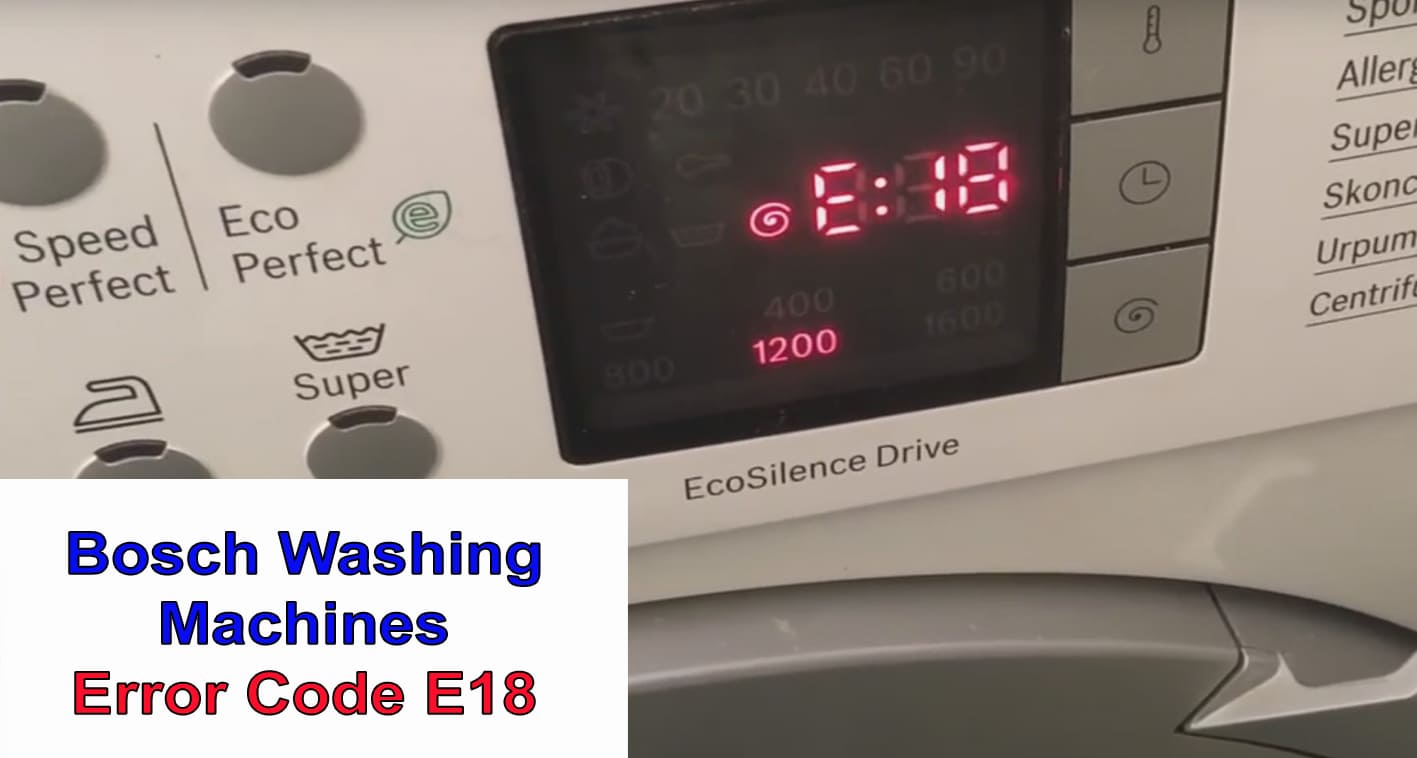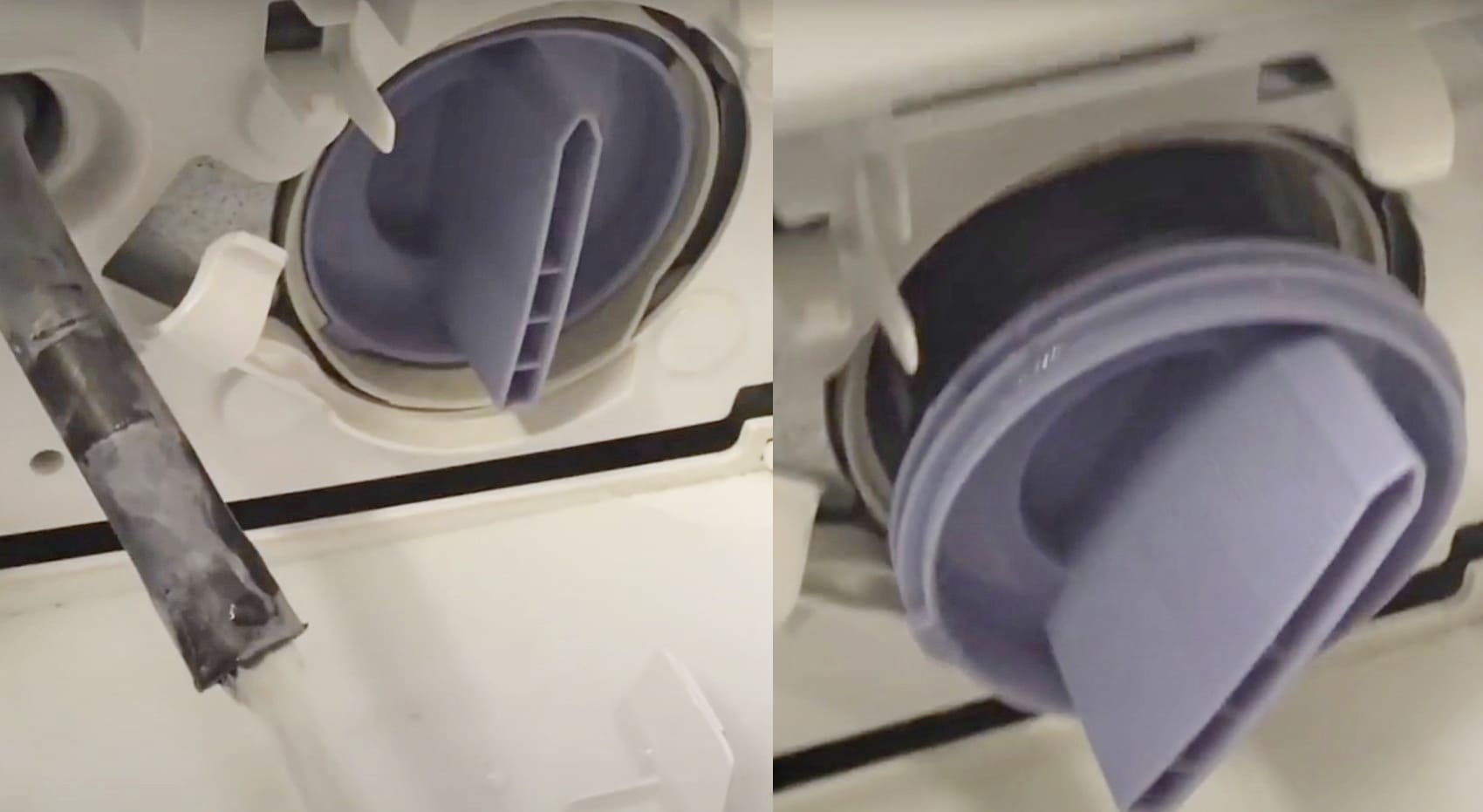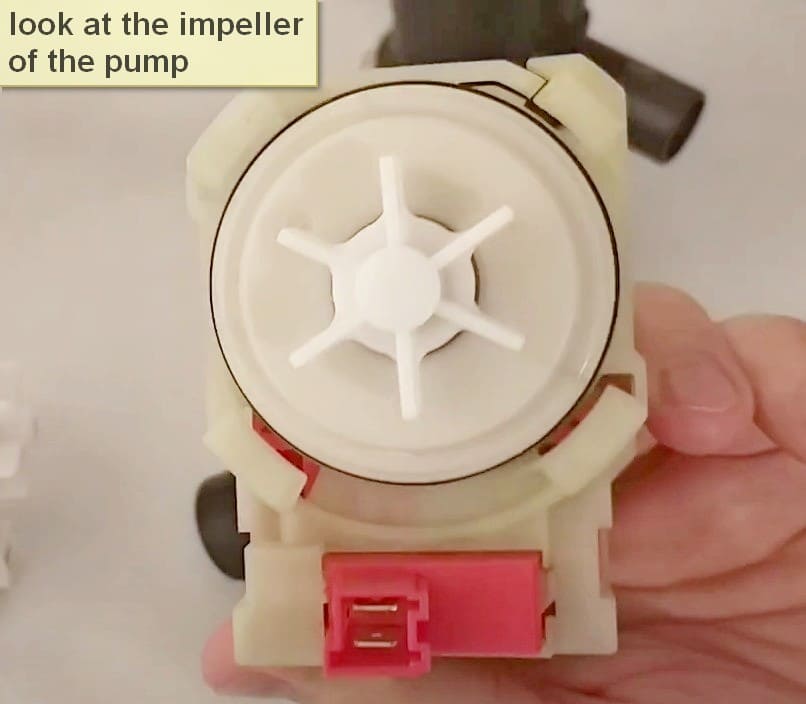The indication of the E18 code on the display of your device means there are some issues with the drainage system of your machine. In other words, there is no water in the tank and the device can’t start the draining process.
In some models the error can be shown as F18 and D02, as for the washers without a display, the error will be reflected by the blinking of 1000 and 600 rpm indicators.
What can cause the E18 Error?
After you figured, that the machine can’t remove water after the washing cycle, you need to understand the reason why it has happened and try to fix it.
There are several explanations for the E18 Error:
- Clogged or blocked drainage system;
- Drainage hose is not connected right;
- Complete or partial pump malfunction;
- The failure of the control module;
- Damaged drain hose;
- Breakage of the water sensor;
- Defect of the pressostat (pressure switch).
As you can see from this list, some issues can be easily resolved, others will need more work or professional help.
How to fix the E18 Error?
The first thing you have to do is to close the water supply system, switch the device off and unplug it. The next step is draining the water from the drum, and there are two ways for it.
You can drain all the water from the machine with a drain-hose, which is placed close to the drain-filter. To do this, open the door located on the bottom of the rear panel of the device. The second way to do this is to take off the drain filter, but in this case, you should be ready to eliminate the puddles on the floor, so prepare some rags and pieces of cotton.
There is one positive thing in the second method — it lets you check the filter, which also could cause the E18 error. Rinse it thoroughly, and then proceed with the hosepipe, which can also be clogged or damaged. If both elements seem to be clean and fine, you should start looking for the reason in another place.
Make sure to properly connect the filter and the hose back, because even the smallest gap can cause leakage during the next washing cycle.
To check the internal components you will have to take off the front panel, unscrew the bolts and take off the clamps. Disconnect the lock device and unplug the wiring. Do not forget to take photos on every stage, they will help you to assemble every-thing correctly. Take out the cuvette and carefully disconnect the control panel.
Now you can see the drain pump on the right. Remove the clamps and detach the pump, to examine it. Check for dirt and clogs, rinse and clean it. If it was not about the clogging, then it might be a mechanical pump issue, so keep inspecting it.
Check the condition of the bearings and replace them if necessary. Then clean all debris, see if the brushes need to be replaced. While replacing make sure that all the connections are tight.
Then take a closer look at the impeller of the pump, which can also be damaged along with some electrical components. If you notice a breakage, the components should be replaced. After changing damaged parts to new ones, connect everything back and assemble the device, so that you could run a new washing cycle and to check whether the E18 error code is still shown on the display.
If nothing changed, keep testing other elements of the machine to detect the reason for the error. Proceed with the pressure sensor. To find it, you need to open the top panel of the appliance. The pressostat will be on your right. Check all the contacts and connections and test the detector with the multimeter. Replace the part in case it is damaged.
If none of the above steps helped reset the error, then the problem is most likely in the module. The failure of this element can be very serious, as it affects all the sys-tems of the washer, so better contact the specialist to make a proper diagnostic and repair. Sometimes it is needed to only replace a small chin in the module, but in some cases, the whole part should be substituted.
In order to prevent the occurrence of E18 Error code on the control panel of your washing machine, clean filters and hoses in time, remove all the foreign objects and clogs before they lead to serious trouble in the operating of the device.



